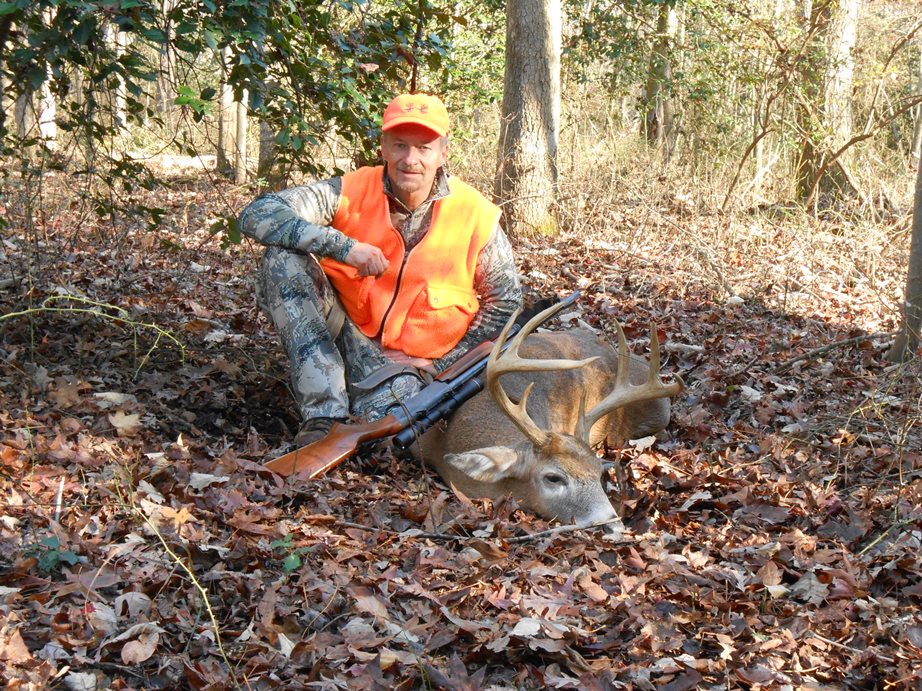By Bill Jones
After 34 years working for the Division of Fish and Wildlife, I have retired.
 How time has flown! I was lured to Delaware to work part time on the phragmites control program. I was fresh out of grad school and unemployed, and I figured it would be a good way to get some experience in the wildlife field. I fully intended to return to my native Pennsylvania to work there. Turns out I married a native Delawarean, and here I still am. The benefits I enjoyed working in a small state included occasional out-of-state travel and being able to come home to my family every night. Priceless.
How time has flown! I was lured to Delaware to work part time on the phragmites control program. I was fresh out of grad school and unemployed, and I figured it would be a good way to get some experience in the wildlife field. I fully intended to return to my native Pennsylvania to work there. Turns out I married a native Delawarean, and here I still am. The benefits I enjoyed working in a small state included occasional out-of-state travel and being able to come home to my family every night. Priceless.
My love of hunting and the outdoors pointed me towards this field at an early age. I grew up in a rural area of Pa. in a hunting family. My grandfather and dad were my heroes; I was amazed at how they could take me out in that big-woods country, find their way around and tell me where the deer might be. Opening days of buck season were like Christmas morning to me because we had a tradition of meeting with the same people at “Cowan’s Shanty” to see how everyone did. That opening day excitement burns in me to this day.
I’ve always been most comfortable writing about deer and turkey hunting, since those are about the only types I participate in these days. I’ve also tried to combine my experience as a wildlife biologist as it relates to hunting.
To my mind, the Pittman-Robertson Act ranks as one of the most important pieces of legislation on the books. Established in the 1930s, it places an excise tax on hunting-related equipment that is collected at the federal level. For every $1 a state wildlife agency spends on approved activities, $3 comes back to the state. What a deal! I have seen every day how important these funds are in managing and purchasing wildlife areas that both the hunting and non-hunting public use and enjoy.
The other big take home for me is habitat management. Major land uses affect much of the wildlife population we see. For example, less demand for forest products leads to less tree cutting. This, in turn, helps bird species like woodcock and bobwhite quail. As wildlife managers, we try to mitigate some of these effects on small wildlife areas, but at a landscape level, it can be tough to reverse trends. “Habitat is where it’s at,” is a phrase a grad student drilled into me way back and habitat management has been one of the most fulfilling parts of my job.
Hunting, by nature, is controversial since the ultimate goal of the activity is the death of an animal. I don’t dispute that fact, but after living with non-hunters most of my adult life I know I must be sensitive and responsible about it. In many cases, hunting is necessary to cull large herds of animals that would otherwise starve, or reduce our farmers’ crop yields, or become traffic hazards. But in my case, I became a hunter because I wanted to be like my grandfather and dad.
I continue to hunt, in part, because a gentleman who I consider to be a true writer, Colonel Tom Kelly, penned a classic book, “The Tenth Legion.” In the book is a passage that I take to heart: “the first turkey that ever came to me on the ground did it a long time ago. I sat there with my hands shaking and my breath short and my heart hammering so hard I could not understand why he could not hear it. The last turkey that came to me last spring had exactly the same effect, and the day that this does not happen to me is the day that I quit.” Amen, brother.
I hope that I have in some small way carried on the hunting heritage in my adopted state. Thank you, Delaware, for a lifetime of memories.
Bill Jones is the former Division of Fish and Wildlife Regional Manager.
A version of this article appeared in the summer 2020 issue of Outdoor Delaware and has been updated.
Related Topics: boating, fishing, hunting, outdoor delaware, outdoors and recreation, people